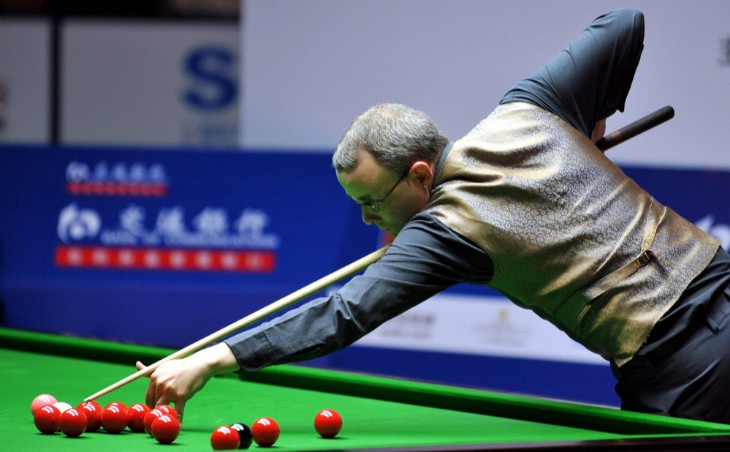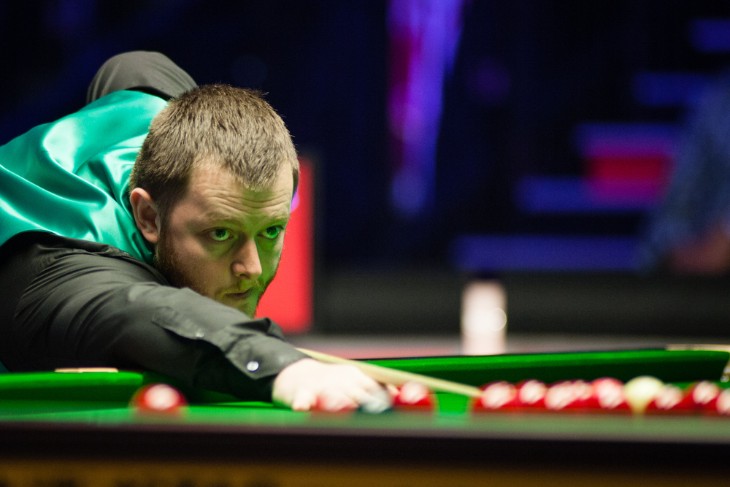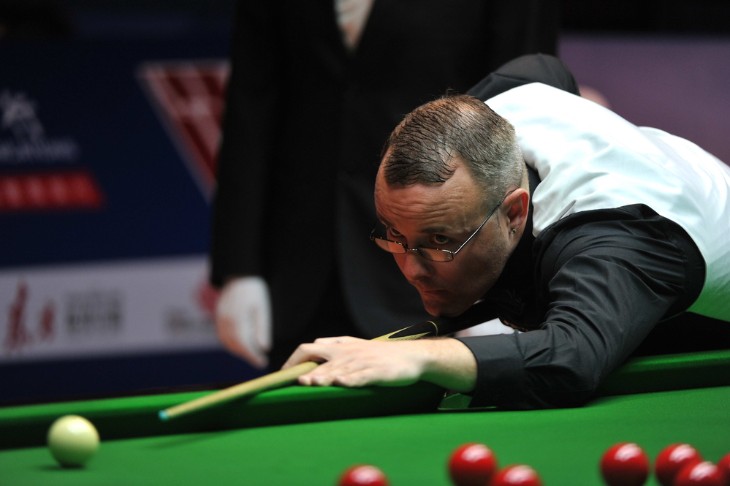The game of snooker and pool is not just about hitting balls with a cue; it's an art and science, where the strategic use of angles in potting plays a crucial role. Mastering calculated shot placement can significantly elevate a player's game, turning challenging shots into opportunities. This comprehensive guide delves into the intricacies of using angles effectively, providing players at all levels with the insights needed to refine their technique and strategy.
Understanding the Basics of Angles in Potting
Getting to grips with the basics of angles in potting is essential for anyone looking to improve their snooker or pool game. At its core, potting involves hitting the cue ball so it strikes another ball into a pocket. The angle at which the cue ball hits the target ball greatly influences the shot's success.
The first concept to understand is the 'contact point'. This is the exact spot on the target ball that the cue ball needs to hit to pot it successfully. Visualising a straight line from the target ball to the pocket helps identify this point. The aim is to hit the cue ball so that it contacts the target ball at this precise point.
Another fundamental principle is the 'line of aim'. This is the imaginary line that runs through the cue ball and the contact point on the target ball. Aligning your cue along this line is crucial for accurate shot-making. The stance and cue action should all be directed towards ensuring the cue follows this line when striking the cue ball.
Understanding angles also involves recognising how the cue ball's path changes depending on where it strikes the target ball. Hitting the ball directly in the centre results in a straight shot, while hitting off-centre causes the balls to deflect at angles. The degree of deflection depends on the point of contact and the force applied.
Mastering the basics of angles in potting is about more than just theory. It requires practice. Spending time on the table, experimenting with different shots, and observing the outcomes helps embed these principles. With practice, players develop an intuitive sense of angles, improving their potting accuracy and overall game strategy.
[promotion:173]
The Importance of Geometry in Shot Planning
Geometry plays a pivotal role in the strategic planning of shots in both snooker and pool. It's the mathematical foundation that underpins every successful shot, allowing players to predict the trajectory of balls with precision. Understanding geometric principles enables players to see the table as a grid of possibilities, where angles and lines determine the best course of action for potting and positioning.
Central to effective shot planning is the concept of the 'angle of incidence equals the angle of reflection'. This principle states that the ball will rebound off the cushion at the same angle it approached, assuming no spin alters its path. This knowledge is crucial for planning shots that involve cushions, helping players to position the cue ball for their next shot.
The use of imaginary lines and triangles also assists in visualising shot outcomes. By imagining a triangle formed by the cue ball, the target ball, and the intended pocket, players can better align their shots to ensure accuracy. This geometric approach simplifies the complex interactions on the table, making it easier to execute precise shots.
Moreover, understanding geometry aids in calculating the 'potting angle', the precise angle required to direct the target ball into the pocket. This calculation is vital for consistent potting, especially in tight situations where precision is paramount.
Geometry is not just a theoretical concept but a practical tool in shot planning. Its principles guide players in making informed decisions, from simple pots to complex positional plays. By embracing geometry, players can elevate their game, using calculated shot placement to outmanoeuvre opponents and control the table.

Advanced Techniques for Calculating Shot Angles
Mastering advanced techniques for calculating shot angles can significantly improve your precision in snooker and pool. These methods go beyond basic geometry, offering players refined strategies for navigating the table.
- The Diamond System: This technique uses the diamonds (or dots) on the table's rails as reference points for calculating bank shots and kick shots. By counting diamonds from where the cue ball lies to the target point on the cushion and applying a specific formula, players can determine the ideal angle to send the cue ball towards their intended destination. This system requires practice but becomes an invaluable tool for executing complex shots.
- The Ghost Ball Method: To visualise the contact point on the target ball, imagine a 'ghost ball'—a virtual ball placed in such a way that the centre of the ghost ball aligns with the contact point. This method helps in visualising the line of aim for potting the ball. It's particularly useful for determining the angle needed to strike the target ball correctly.
- Using Spin to Alter Angles: Applying side spin (English) to the cue ball can change its path after contact with the target ball or cushions, allowing for more nuanced control over shot placement. By understanding how different types of spin affect the cue ball's trajectory, players can make adjustments to the natural angle of a shot, opening up new possibilities for positioning and potting.
- The Parallel Aiming System: This involves drawing an imaginary line parallel to the desired path of the target ball, extending back through the cue ball. This line helps players align their shot, ensuring the cue stick follows the correct path for the intended angle. It simplifies aiming for both direct pots and shots involving cushions.
The Role of Spin in Angle Adjustment
Spin, also known as English in the world of snooker and pool, is a key factor in adjusting the angle of the cue ball's path. By mastering spin, players can manipulate the ball's trajectory, enabling more strategic shot placement and better control over the game.
Applying side spin to the cue ball affects its direction after contact with the target ball or cushion. For instance, applying right spin (right English) makes the cue ball veer to the left after hitting a cushion, and vice versa. This technique allows players to reach positions on the table that would be impossible with a straight shot, opening up opportunities for potting and positioning that were not initially apparent.
Top spin, or follow, propels the cue ball forward after it contacts the target ball, increasing its travel distance. This is particularly useful for shots where the player needs to position the cue ball at the opposite end of the table. Conversely, back spin, or draw, causes the cue ball to reverse its direction after hitting the target ball, useful for when the player needs to pull the cue ball back towards themselves.
Understanding how to apply different types of spin and anticipating the resulting changes in angle require practice and experience. The amount of spin, the speed of the shot, and the point of contact on the cue ball all influence the outcome. Players must experiment with these variables to grasp how spin affects the cue ball's behaviour.
Spin plays a crucial role in angle adjustment, offering players a higher degree of control over their shots. Whether it's navigating around obstacles, setting up for the next shot, or simply potting a difficult ball, mastering the use of spin can significantly enhance a player's ability to dictate the flow of the game.
Practising Angle Recognition through Drills
Improving angle recognition in snooker and pool is essential for developing a strategic edge in your game. Practising specific drills can significantly enhance your ability to judge and utilise angles more effectively. Here are some targeted exercises to sharpen your skills:
Setting up shots that require you to use the cushions to pot balls is a great starting point. Begin with simple angles, aiming to bounce the cue ball off a single cushion before potting the target ball. Gradually increase the complexity by introducing more cushions and tighter angles. This drill helps build an intuitive understanding of how the angle of approach affects the rebound direction.
Another effective drill involves placing the cue ball and a target ball at set distances apart on the table. Practice potting the target ball from various angles, starting with straight shots and progressively moving to more acute and obtuse angles. This exercise improves your ability to visualise the line of aim and judge the required angle for successful potting.
Practising with the ghost ball method can also enhance angle recognition. Place a marker (such as a small piece of paper) on the table to represent the ghost ball's position for a given shot. Aim to strike the cue ball so that it would theoretically pass through the marker before hitting the target ball. This visual aid helps in accurately determining the contact point on the target ball, improving potting accuracy.
Incorporating spin into your angle recognition drills adds another layer of complexity and learning. Experiment with applying different spins to the cue ball and observe how it alters the angle of the shot. Understanding the relationship between spin and angle adjustment is crucial for mastering more advanced shot-making techniques.
By regularly practising these drills, you'll develop a more nuanced understanding of angles and how to manipulate them to your advantage. Consistent practice not only improves angle recognition but also enhances overall shot precision and strategic thinking on the table.

Analyzing Professional Players for Angle Strategy
Analyzing the gameplay of professional snooker and pool players is a highly effective way to enhance your understanding of angle strategy. Watching how the pros navigate complex shots and position the cue ball can provide valuable insights that can be applied to your own game.
- Study Match Replays: Dedicate time to watching replays of professional matches, focusing on the players' decision-making regarding shot angles. Notice how they choose their shots based on the angles available, and how they use spin to manipulate the cue ball's path. This observation can reveal patterns and strategies used at the highest level of play.
- Break Down Crucial Shots: Look for key moments in a match where a player was faced with a difficult shot choice. Pause the replay and consider what you would have done in the same situation. Then, watch how the professional executed the shot, paying close attention to the angle chosen and the outcome. This exercise can highlight the importance of precise angle selection and cue ball control.
- Focus on Positional Play: One of the hallmarks of top players is their ability to not just pot balls, but to position the cue ball optimally for the next shot. Observe how professionals use angles to navigate the table, setting themselves up for successful breaks or defensive plays. This aspect of angle strategy is crucial for maintaining control of the game.
- Learn from Commentary: Professional matches often feature commentary from experienced players or coaches. Listening to their analysis can provide additional insights into the angle strategies being employed. Commentators frequently discuss the players' choices, offering perspectives on why certain shots were selected and the technical considerations involved.
The Psychological Aspect of Calculated Shot Placement
The psychological aspect of calculated shot placement in snooker and pool plays a significant role in a player's performance. Mastering the mental game is just as important as perfecting physical skills. Confidence, focus, and the ability to stay calm under pressure are key elements that affect how well a player can execute strategically placed shots.
Confidence is crucial when it comes to taking calculated shots. Players who believe in their ability to make a shot are more likely to succeed. This self-assurance comes from practice and experience. It allows players to trust their judgment and commit to their shot choice without hesitation. A confident player is also more adept at handling the psychological warfare that can occur during competitive play, not allowing opponents' tactics to disrupt their focus.
Focus is another essential component. The ability to concentrate fully on the task at hand, blocking out distractions, enables players to calculate angles and shot placement with precision. This level of concentration ensures that all elements of the shot, from the angle of approach to the application of spin, are considered and executed as planned.
Staying calm under pressure is what separates the good players from the great ones. In high-stakes situations, the pressure can cause players to second-guess themselves or rush their shots. Players who maintain their composure are more likely to accurately assess the table, choose the best shot, and execute it successfully. They use deep breaths, routine, and positive self-talk to manage stress and keep their nerves in check.
The psychological aspect of calculated shot placement is a vital component of snooker and pool. Confidence, focus, and calmness under pressure enable players to make the most of their technical skills, allowing them to execute complex shots with precision and strategic intent. Developing these mental attributes is essential for anyone looking to improve their game and achieve success on the table.
In Summary
The strategic use of angles in potting is a game-changer in snooker and pool. By understanding the basics, applying advanced techniques, practising diligently, and learning from the pros, players can significantly improve their calculated shot placement.
Embracing the psychological and technological aspects of angle strategy further enhances one's ability to play with precision and confidence. Armed with these insights, players can approach the table with a new level of expertise, ready to outsmart their opponents and enjoy greater success in their game.



.webp)



 (1).webp)




















